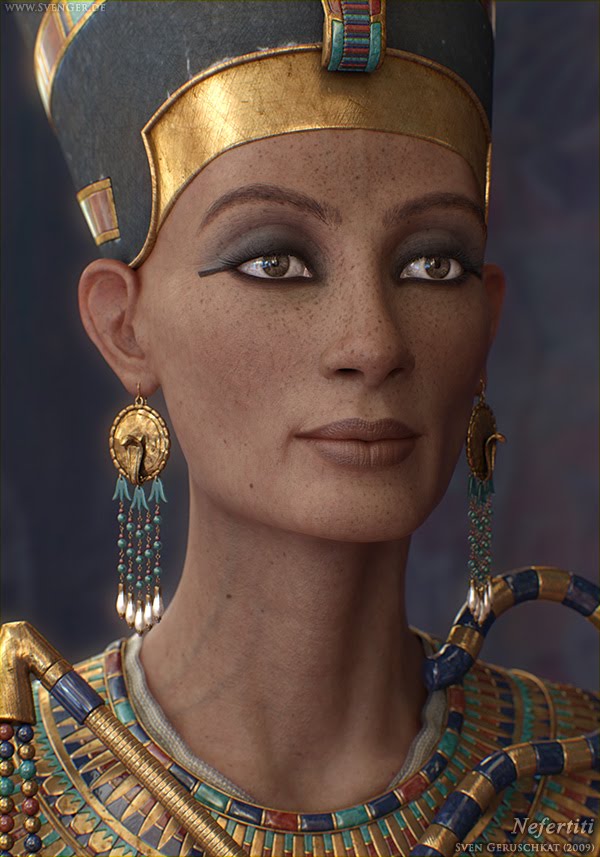The Enduring Legacy Of Nefertiti: A Queen Of Ancient Egypt
Nefertiti is a name that echoes through the corridors of history, capturing the imagination of scholars, artists, and enthusiasts of ancient civilizations alike. This legendary queen, known for her beauty and influence, was not only the wife of Pharaoh Akhenaten but also a pivotal figure in one of the most transformative periods in ancient Egyptian history. Her life, shrouded in mystery, continues to inspire countless stories and theories about her reign, her role in religious shifts, and her enduring legacy.
The allure of Nefertiti is not merely in her physical beauty but also in her political acumen and the significant changes she championed during her time. The vibrant artistry of the Amarna period, characterized by its unique style and iconography, is often associated with her and her husband, Akhenaten. This period saw a radical departure from traditional Egyptian art and religion, as they introduced the worship of Aten, the sun disc, which sparked both admiration and controversy among their subjects.
As historians and archaeologists continue to uncover the mysteries surrounding Nefertiti, her story remains a compelling narrative about power, femininity, and the complexities of ancient Egyptian society. From her stunning bust, which has become an icon of beauty, to the possible circumstances of her death and burial, Nefertiti's life offers a fascinating glimpse into the past that resonates with modern audiences. What can we discover about this enigmatic figure, and how has her legacy endured through the ages?
Who Was Nefertiti?
Nefertiti, whose name means "the beautiful one has come," was an Egyptian queen and the Great Royal Wife of Pharaoh Akhenaten, known for her striking beauty and powerful position during the 18th Dynasty of Egypt. She played a crucial role in the religious revolution that Akhenaten initiated when he replaced the traditional polytheistic worship with the monotheistic worship of Aten, the sun disk. Nefertiti's influence extended beyond mere aesthetics; she was a partner in her husband's rule and a mother to six daughters, making her an integral part of the royal family and Egyptian society.
What Are the Key Facts About Nefertiti’s Life?
| Detail | Description |
|---|---|
| Birth Name | Unknown, often referred to as Nefertiti |
| Born | Circa 1370 BC |
| Spouse | Pharaoh Akhenaten |
| Children | Six daughters, including Ankhesenamun |
| Reign | Approximately 1353–1336 BC |
| Death | Unknown; theories suggest various possibilities |
| Burial Place | Possibly in the Valley of the Kings, though unconfirmed |
What Was Nefertiti’s Role in Ancient Egyptian Society?
Nefertiti wasn’t just a figurehead; she actively participated in her husband's reign and the religious transformation of Egypt. As the Great Royal Wife, she was involved in various ceremonial functions and held the title of "Hereditary Princess," which emphasized her importance in the royal lineage. Nefertiti was often depicted alongside Akhenaten in reliefs and statues, symbolizing her equal status in governance and spirituality during this revolutionary period.
How Did Nefertiti Influence Art and Culture?
The Amarna period, which Nefertiti and Akhenaten ruled, is renowned for its distinctive artistic style that deviated from traditional Egyptian norms. Artists began to portray more realistic and intimate depictions of the royal family, showcasing Nefertiti's beauty in various forms of art, including sculpture and painting. The famous bust of Nefertiti, discovered in 1912, exemplifies this artistic evolution. It is celebrated not only for its stunning craftsmanship but also for its embodiment of Nefertiti's enduring legacy as a cultural icon.
What Mysteries Surround Nefertiti's Death?
The circumstances surrounding Nefertiti's death remain one of the great mysteries of ancient history. While there are various theories regarding her fate, including speculation that she may have ruled as a pharaoh after Akhenaten's death, no definitive evidence exists. Some historians suggest that she may have died during childbirth, while others propose that she could have been buried in a different location than initially thought, possibly beyond the Valley of the Kings.
How Has Nefertiti’s Legacy Endured Over Time?
Nefertiti's legacy has transcended time, influencing not only the study of ancient Egypt but also modern culture. Her image has been used in various forms of art, literature, and popular media, symbolizing beauty, power, and mystery. Moreover, her story has inspired countless works, from historical novels to documentaries, ensuring that her name continues to be synonymous with the grandeur of ancient Egypt.
What Can We Learn from Nefertiti Today?
The life of Nefertiti offers valuable lessons about the roles of women in history, the intersection of power and art, and the complexities of cultural change. Her partnership with Akhenaten serves as a reminder of the potential for collaboration and shared vision in leadership. As we reflect on her legacy, we can draw parallels to contemporary discussions about gender equality, cultural identity, and the importance of preserving history.
Why Is Nefertiti Still Relevant in Modern Society?
Nefertiti's relevance in today’s society is multifaceted. She represents the enduring fascination with ancient civilizations and their contributions to modern culture. Furthermore, her story encourages conversations about female empowerment and the impact women have had throughout history. In a world that continually strives for equality and recognition of diverse voices, Nefertiti stands as a symbol of strength, beauty, and the complexity of human experience.
In conclusion, the life and legacy of Nefertiti continue to captivate and inspire us. From her significant role in religious and cultural transformations in ancient Egypt to her lasting impact on modern society, Nefertiti remains an enduring figure whose story is far from over. As we continue to explore the depths of her life and influence, we are reminded of the power of history to shape our understanding of ourselves and our world.
Unraveling The Mysteries Of Ripper Yorkshire
Unveiling The Enigmatic Life Of Liv Tyler
Unraveling The Legacy Of Oppenheimer: The Man Behind The Atomic Age


